Full waveforn inversion with synthesized low frequency data
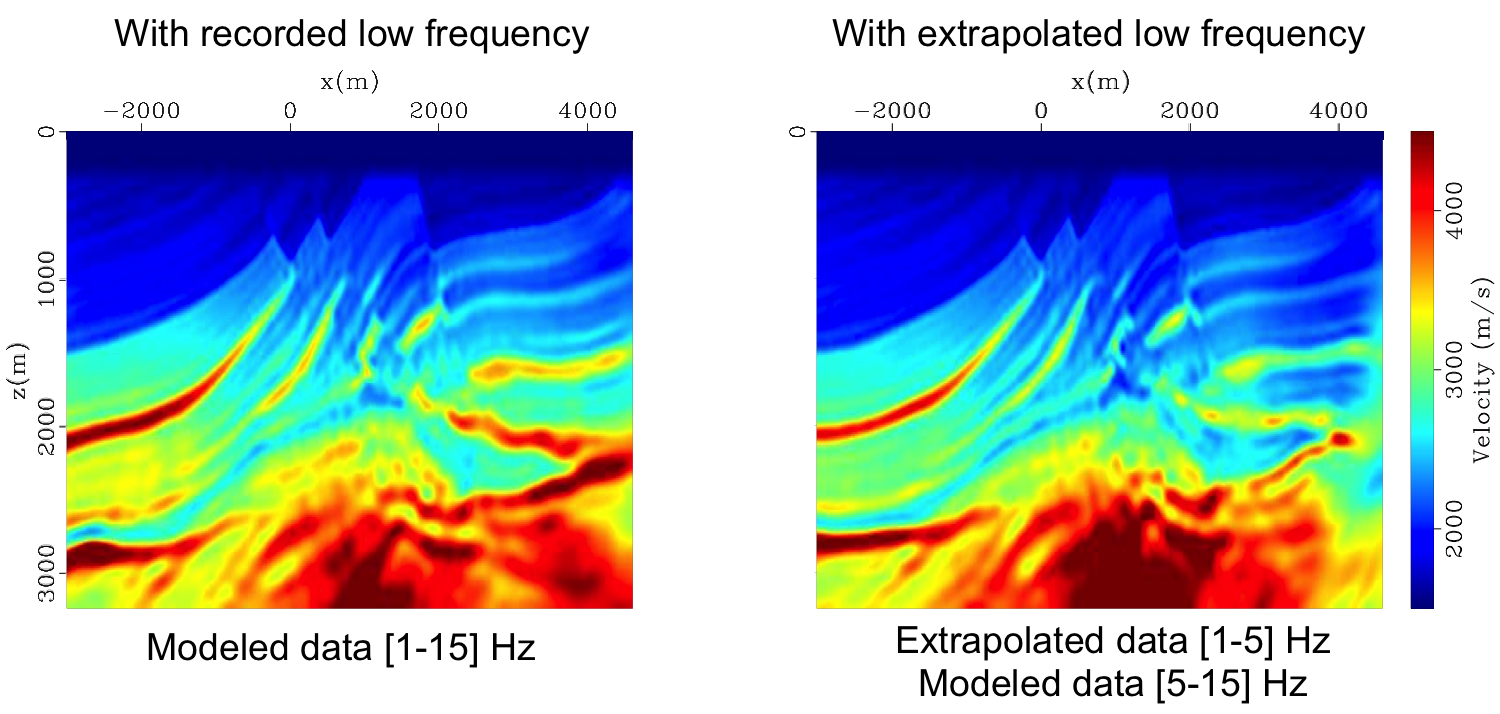
- Full waveform inversion (FWI) deals with oscillatory signals that introduce high nonconvexity in high frequencies. Therefore, successful FWI has to start with ultra low frequencies around 2 to 3 Hz. Instead of acquiring these low frequencies at a very high cost in the field, we synthesized these data by careful data processing and explicit assumptions about wave physics. The synthesized data are not exact. Nonetheless, they are sufficient for initializing FWI at these low frequencies.
- Yunyue Li and Laurent Demanet, 2016, Geophysics
- [Geophysics paper]
Extrapolating frequencies in seismic data
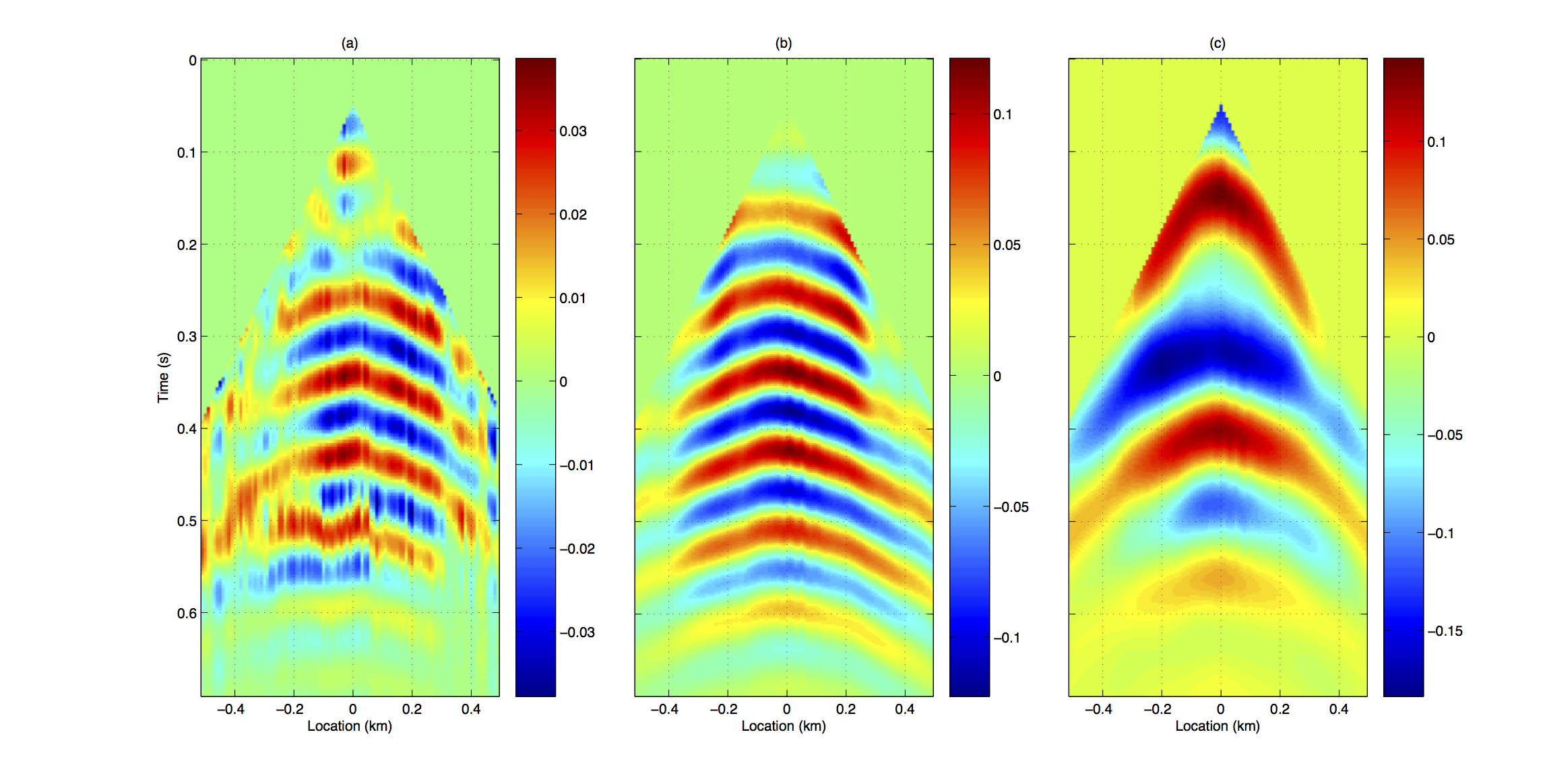
- One of the most severe problems in seismic inversion is the lack of all frequency components. In this study, we develop a method to decompose seismic records into single, non-overlapping events, each defined by a smooth phase function and a smooth amplitude function. This decomposition has a similar nonconvexity as full waveform inversion, but it can be initialized explicitly at a low cost with high accuracy. The initialization is achieved by MUSIC at center traces and the inversion is slowly expanded to include nearby traces. With the explicit handle on the phase and amplitude functions for each seismic event, we can further assume their shapes in the unrecorded frequency bands. Namely, we assume the phase function is linear while the amplitude function is constant with respect to frequency. The resulting synthesized data are used to initialize full waveform inversion at the low frequencies.
- Yunyue Li and Laurent Demanet, 2016, Geophysics
- [Geophysics paper]
Linking geophysics with hydrology with rock physics
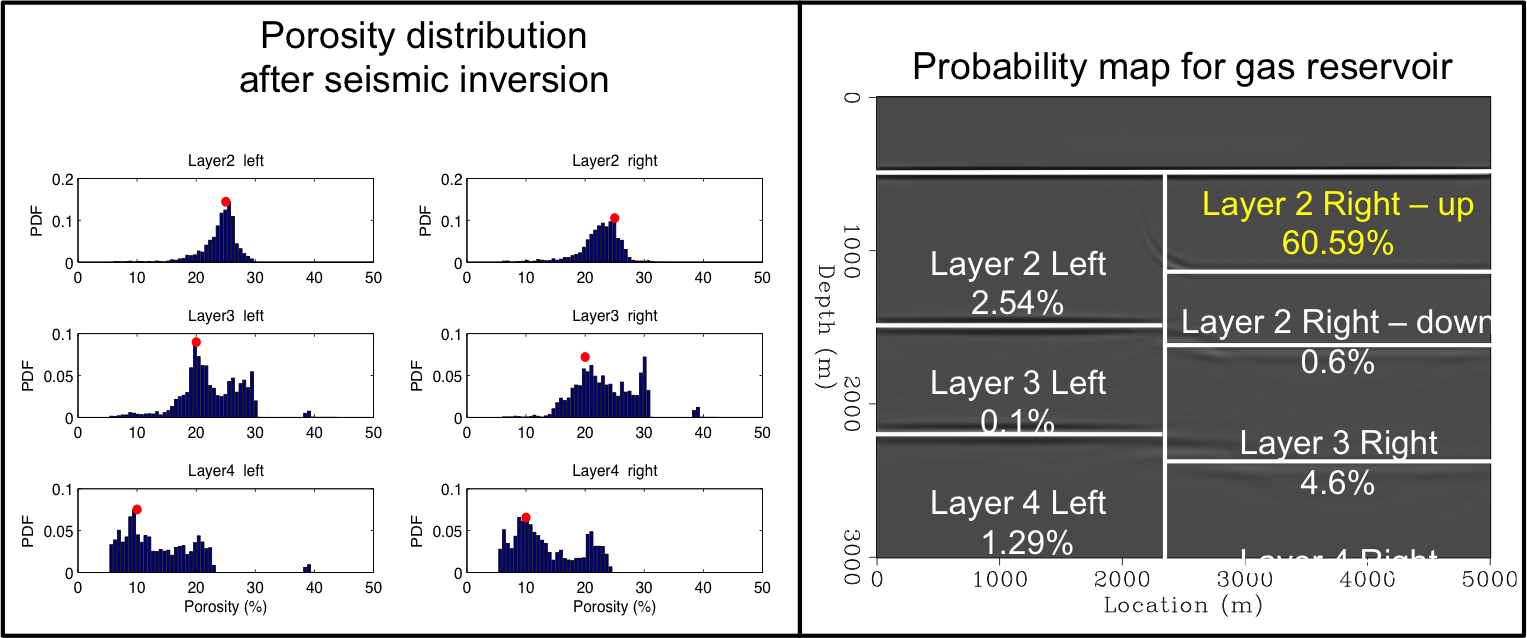
- Geologic model building of the subsurface is a complicated and lengthy process. Seismic data are usually inverted at the beginning of this process and discarded after inversion and interpretation. Modifications from the seismic inversion results are almost never validated due to the one-way information flow towards reservoir properties. In this paper, we propose to include the production data and the inverted reservoir properties back in the seismic inversion during the next iteration of geologic model updates. The elastic properties and the fluid-flow properties are connected and cross- updated based on the underlying rock physics models. The statistical approach we propose in this paper not only provides a single Earth model that best satisfies both types of data, but also has the potential to properly quantify the uncertainty associated with this model. We show preliminary results from the proposed framework on a synthetic gas-pocket identification example.
- Yunyue Li, Yi Shen, & Peter Kang, 2015, EAGE Abstract
- [Expanded Abstract]
Anisotropic model building with rock physics modeling
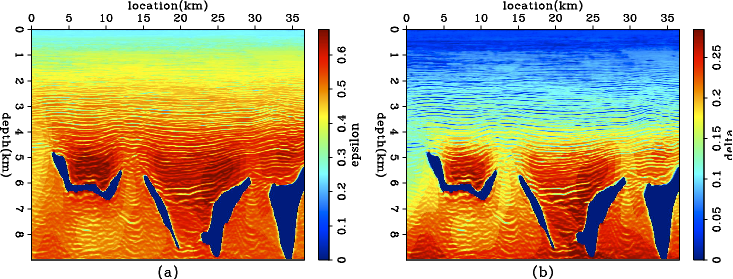
- Anisotropic model building using surface seismic data is a well-known under-determined and nonlinear problem. Inversion lost direction in the null space and ended up with ambiguous models. Albert Tarantola taught us that adding a model covariance can regularize the inversion. However, how to build a covariance matrix remains a mystery. In the current studies, we build the anisotropic prior model using deterministic and stochastic rock physics modeling for shale anisotropy. An ensemble of rock physics models are generated by sample the input parameters in a certain region, which can be significantly narrowed down using well log measurements. The lithological inversion results of a previous seismic processing workflow can also be used as the input of the rock physics modeling.
- Yunyue Li, Dave Nichols, & Gary Mavko, 2013, SEP Report - 149; SEP Report - 150
- [Report]
Image-guided WEMVA for azimuthal anisotropy
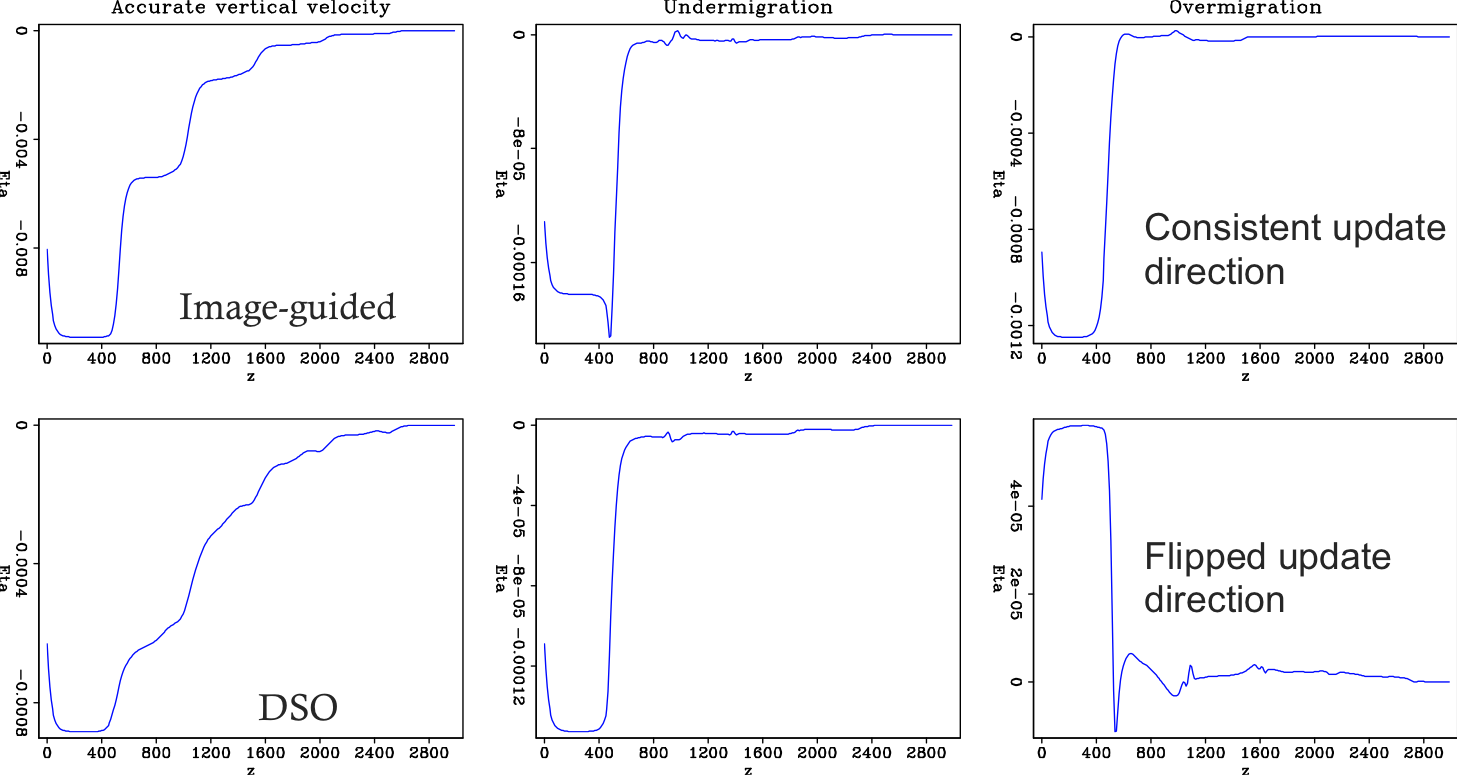
- Often times we have multiple images of the same subsurface. This redundancy has been utilized in many model building processes. In azimuthal anisotropy, traditional processing on individual azimuths usually yields images with inconsistent depths. In this study, we propose to use an image obtained from one azimuth to constrain the image-space velocity analysis on other azimuths. This method directly tackles the differences in anisotropic parameters among different azimuths. By keeping the vertical velocity constant across the azimuths, we separate the kinematic effects due to the anisotropic parameters from those due to the velocity error.
- Yunyue Li, 2013, 83nd Annual International Meeting, Society of Exploration Geophysicists.
- [Expanded Abstract]
Post-propagation filtering for temporal dispersion
- Numerical dispersion in computer-based modeling will produce constructive events which do not exist in the field data. It is interesting that the temporal dispersion is independent with the propagation speed and the spatial grid, but purely determined by the time stepping and the propagation time. Taking advantage of this, we design post-propagation filters to remove the temporal dispersion effects at a very small cost.
- Yunyue Li, Mandy Wong and Robert Clapp, 2016, Geophysics
- [Paper]
WEMVA for anisotropic models
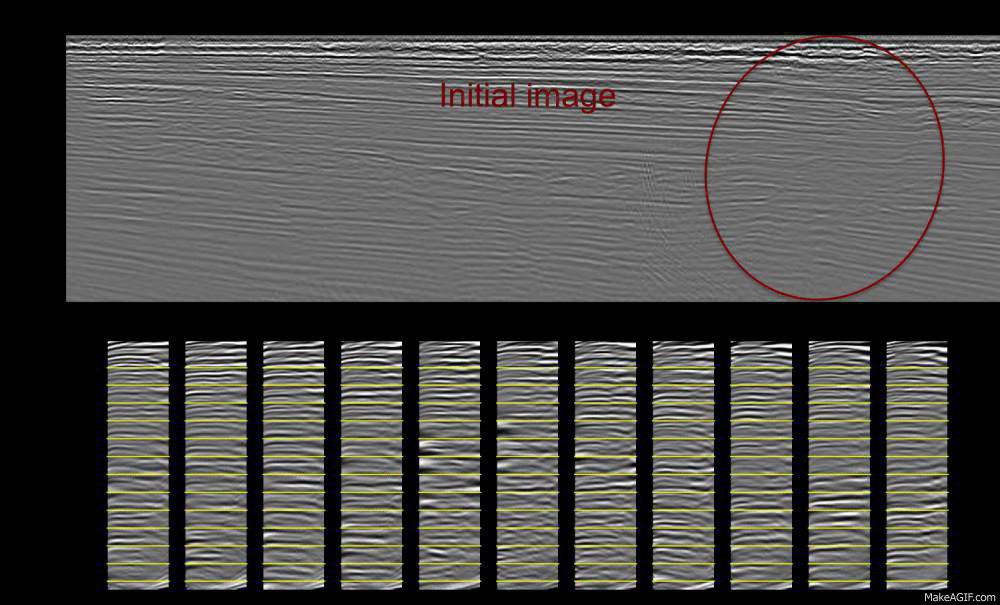
- The reason why I like image-space model building methods is that they produce better models and better images at the same time. By including anisotropy, we estimate the Earth property one step closer to the true Earth. Hence the data collected from the Earth experiments can be better explained. The inverted models can also help seismic interpretation and lithological inversion.
- Yunyue Li and Biondo Biondi, 2012, SEP Report - 147, 148.
- [Extended Abstract]
Robust inversion for sparse models
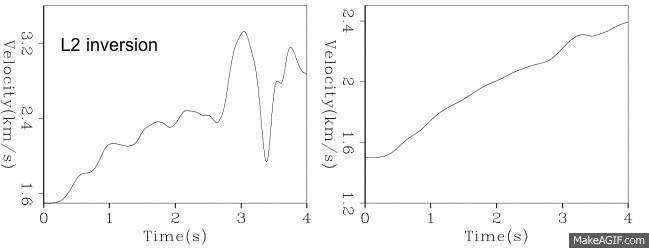
- In the practice of exploration geophysics, we find that a hyperbolic penalty function which has both the characteristics of L1 and L2 penalty functions is preferential. We also find that often times the distribution of the data residuals is different from that of the model residuals. We achieve robustness by using L1 characteristics in the data fitting. We achieve sparseness by using L1 characteristics in the model regularization.
- Yunyue Li, Yang Zhang and Jon Claerbout, 2012, Geophysics.
- [Geophysics paper]